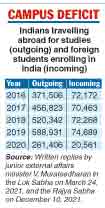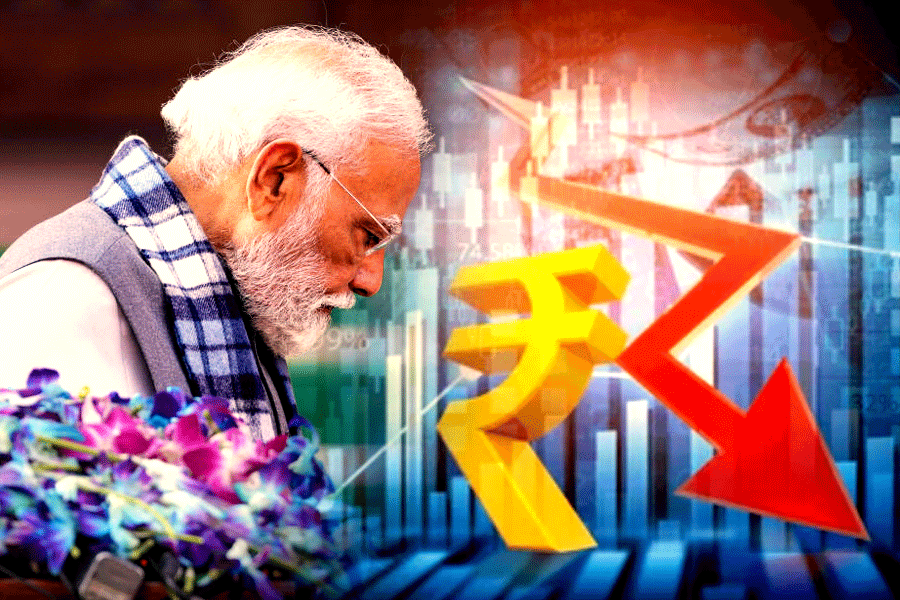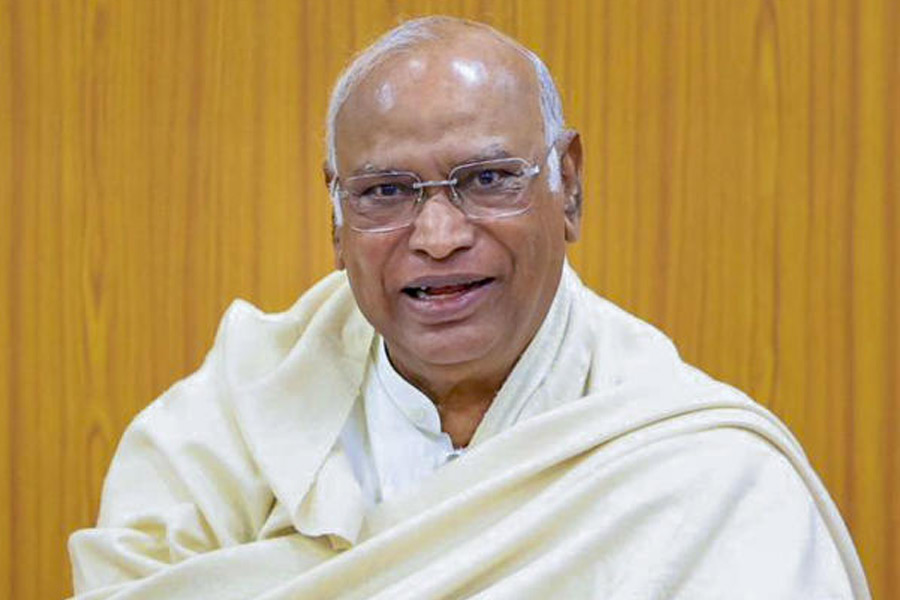Indians keep travelling abroad for studies in growing numbers, with the country bleeding an amount in overseas student remittances that is almost equal to its higher-education budget.
Educationists told The Telegraph the trend was being fuelled by an increasing number of Indian students enrolling in undergraduate courses abroad, unlike before when students went overseas mostly to join postgraduate and doctoral programmes.
Since undergraduate students are generally not allowed to take up part-time jobs abroad, the remittances from home tend to be higher, they added.
While data provided to Parliament by the external affairs ministry shows a steady rise in Indians enrolling in foreign institutions till Covid struck, it also shows a stagnation in foreign students’ enrolment on Indian campuses over the same period. (See chart)

According to Reserve Bank data on the Outward Remittances under Liberalised Remittance Scheme for Resident Individuals, the outward remittance from India on account of foreign education was $4,991 million (Rs 37,055 crore) in 2019-20, before declining to $3,836 million (Rs 28,480 crore) in Covid-hit 2020-21.
For a comparison, the Union budget’s allocation for higher education in 2021-22 is Rs 38,351 crore.
On July 24, 2020, then human resource development minister Ramesh Pokhriyal had met senior officials and heads of institutions to discuss the trend of Indians increasingly travelling abroad for education.
On that day, the ministry set up a committee under then University Grants Commission chairperson D.P. Singh to suggest measures to ensure that more students stay back in India. The committee has submitted its report but it has not been made public.
Educationists said the trend owed to two main factors: More and more parents can now afford to send their children abroad for studies. There’s a largely justifiable perception that the standard of education in India is poor compared with that in a wide range of foreign countries keen to welcome Indian students.
Furqan Qamar, former vice-chancellor of the Central University of Himachal Pradesh, said that enrolment by Indians in undergraduate courses abroad had gone up in “recent years, particularly the last five years”.
“Indian students of master’s and PhD programmes abroad mostly finance their education by earning while studying,” Qamar, former secretary-general of the Association of Indian Universities, which awards equivalence to foreign academic degrees in India, said.
“But the undergraduate students mostly depend on family support.”
M.M. Salunkhe, former vice-chancellor of the Rajasthan Central University, said that Indian higher education institutions were, except for a “select” few, largely “substandard”.
But Anil Sahasrabudhe, chairperson of the All India Council of Technical Education, questioned the wisdom of students pursuing undergraduate courses abroad.
“This is meaningless. In many foreign universities, research students take undergraduate classes; while in India, undergraduate students are directly guided by professors,” he said.
Qamar said the reason India was unable to attract too many foreign students – despite tuition fees being far lower here than in the West --- was that India didn’t allow them to earn while studying.
Amrita Vishwa Vidyapeetham, Combatore, charges an annual tuition fee of $2,700 for a Master of Computer Applications degree. The average annual tuition fee charged by US universities ranges between $10,000 and $20,000.
“So, India has a cost advantage. Yet the cost burden on the foreign student in India is high because he or she cannot earn here,” he said.
At many of Indian students’ favourite destinations --- the US, Britain, Canada, Australia, New Zealand and the UAE --- they are allowed to earn while studying if they are graduates. China, another hot destination, doesn’t allow this, though.
Qamar has calculated that despite the lower tuition fees in India, the average remittance a foreign student in India needs is twice that required by the Indian student in the US, Europe or Australia needs.
Sahasrabudhe cited the Study In India scheme that the government had launched in 2018 to encourage foreign students to enrol in India, using incentives such as scholarships.
Over 100 Indian institutions have created extra seats for foreign students under the scheme, which is targeted at students from about 45 countries across Southeast Asia, Middle East and Africa.
A standardised Indian Scholastic Assessment Test or Ind-SAT was introduced in 2020 for foreign students seeking scholarships under the programme.











